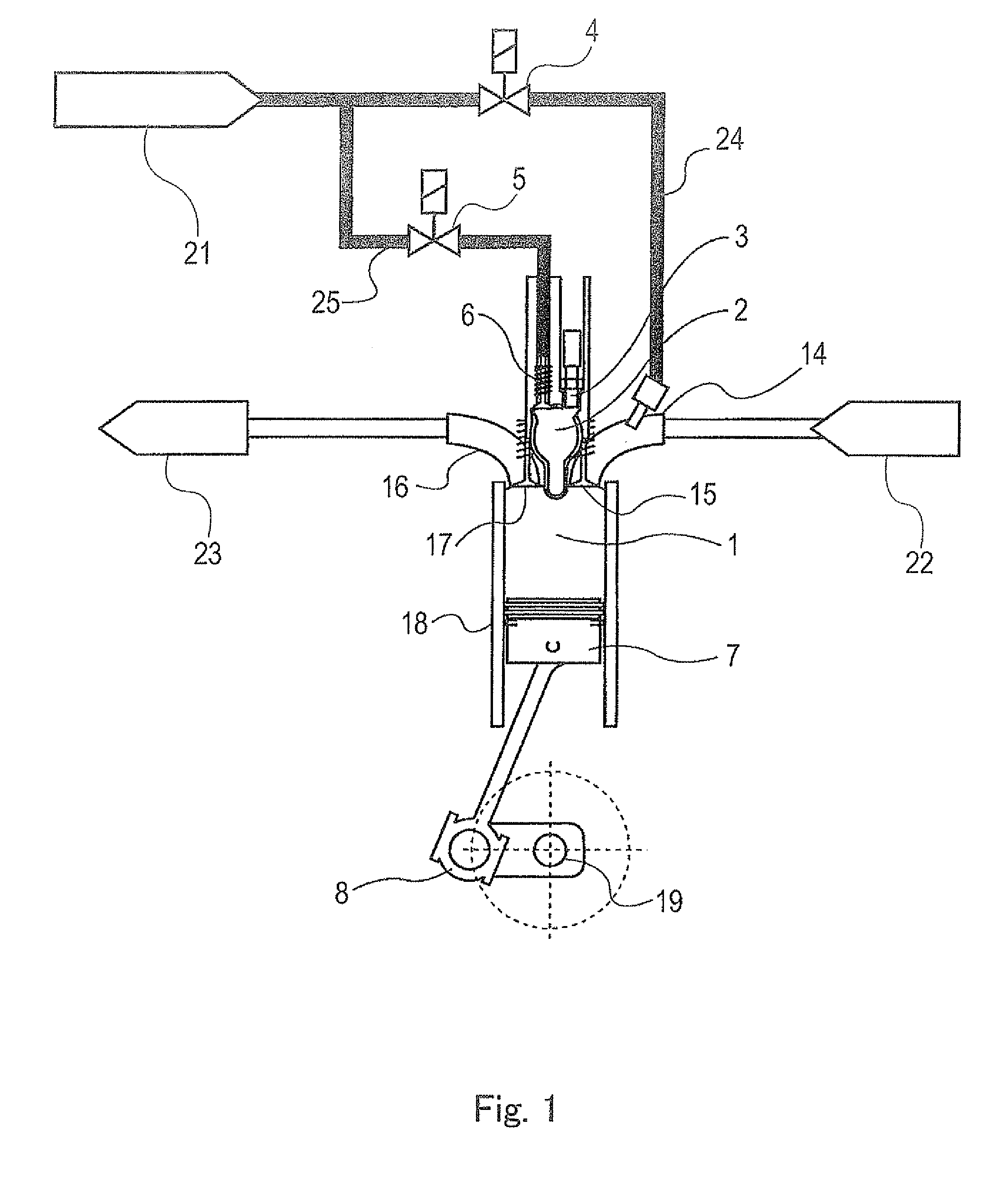Divided-chamber gas engine
a gas engine and divided chamber technology, applied in combustion engines, machines/engines, cylinders, etc., can solve the problems of cracks, thermal fatigue in the inner wall of the auxiliary chamber, and unnecessary installation of denitration devices, so as to suppress degradation of combustion performance and prevent deformation of the nozzle cross section
- Summary
- Abstract
- Description
- Claims
- Application Information
AI Technical Summary
Benefits of technology
Problems solved by technology
Method used
Image
Examples
Embodiment Construction
[0032]Hereinafter, one embodiment of a divided-chamber gas engine according to the present invention is described in detail with reference to the accompanying drawings. FIG. 1 is a conceptual diagram showing a structure of the divided-chamber gas engine according to the embodiment of the present invention. As shown in FIG. 1, the divided-chamber gas engine according to the present embodiment includes a two-stage combustion chamber including a main combustion chamber (which may be hereinafter referred to as a “main chamber”) 1 and an auxiliary combustion chamber (which may be hereinafter referred to as an “auxiliary chamber”) 2 connected to the main chamber 1 via a plurality of nozzles 9. The divided-chamber gas engine is a gas engine configured to perform so-called two-stage combustion, in which a lean air-fuel mixture, i.e., a fuel, supplied into the main chamber 1 is ignited by high-temperature jet flames that jet out from the auxiliary chamber 2 through the nozzles 9.
[0033]The ma...
PUM
 Login to View More
Login to View More Abstract
Description
Claims
Application Information
 Login to View More
Login to View More - R&D
- Intellectual Property
- Life Sciences
- Materials
- Tech Scout
- Unparalleled Data Quality
- Higher Quality Content
- 60% Fewer Hallucinations
Browse by: Latest US Patents, China's latest patents, Technical Efficacy Thesaurus, Application Domain, Technology Topic, Popular Technical Reports.
© 2025 PatSnap. All rights reserved.Legal|Privacy policy|Modern Slavery Act Transparency Statement|Sitemap|About US| Contact US: help@patsnap.com



